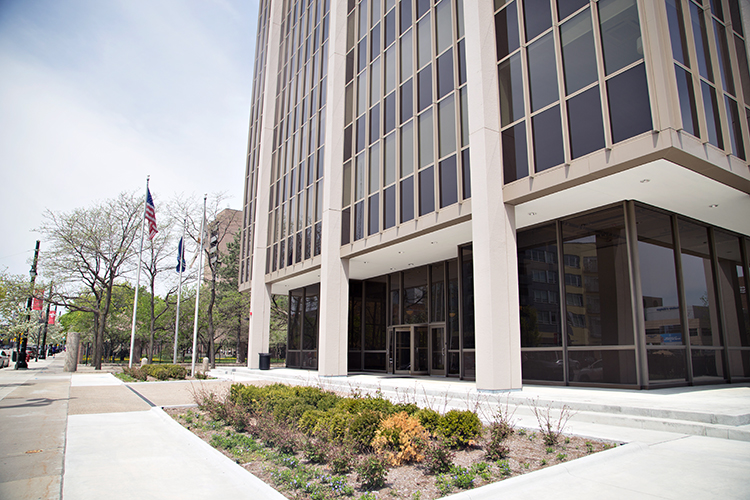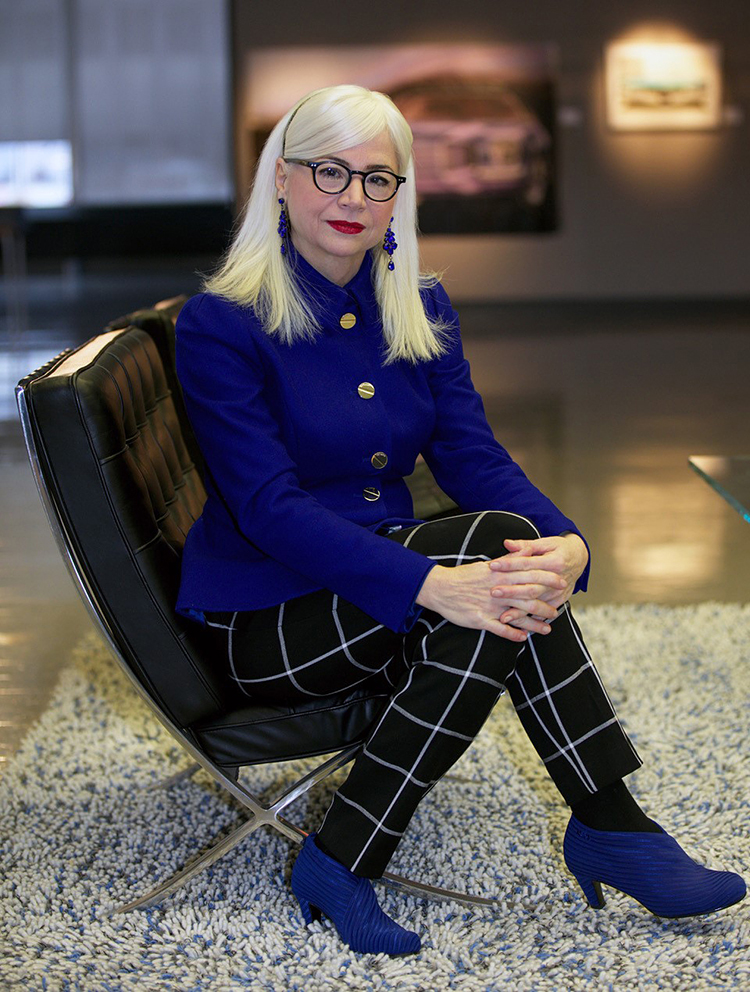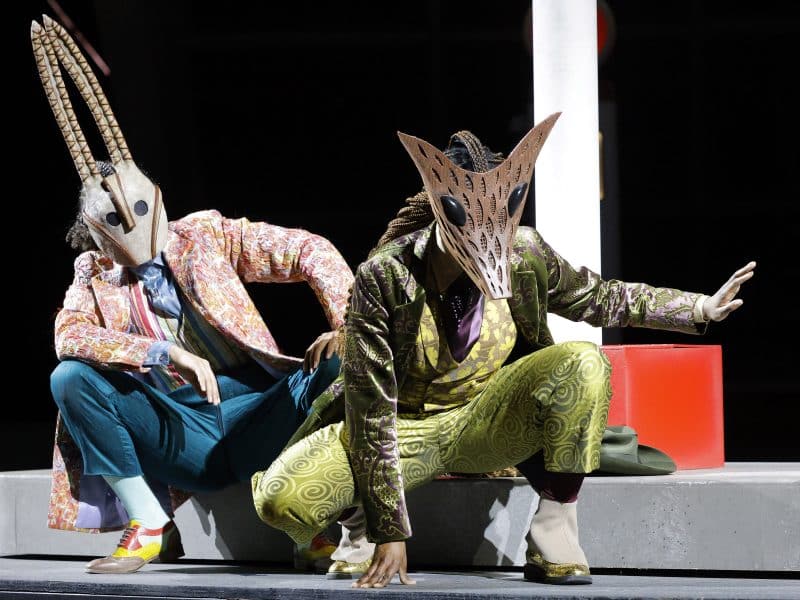Can metro Detroit’s treasure trove of mid-century modern architecture be preserved?
Patrick Dunn tells us about the remarkable history – and sometimes disheartening present condition – of mid-century modern architecture in Metro Detroit.

When the Reynolds Metals Regional Sales Office opened in Southfield in 1959, “Interiors” magazine described the experience of entering the building as “like entering a cut jewel.”
Minoru Yamasaki, the famed architect who created the World Trade Center, designed the building as a visually dramatic tribute to aluminum, with a lily-filled reflecting pool surrounding it.
Today, however, the reflecting pool has been filled in and the building’s interior significantly altered after multiple owners have repurposed the space as a gym. The structure now sits vacant, just one example of the remarkable history—and sometimes disheartening present condition—of mid-century modern architecture in Detroit.
Mid-century modern, generally defined as having held sway from 1933 to 1965, is known for its open floor plans, boxy forms, heavy use of glass, and designs that emphasize a connection to nature. The style is well-represented in metro Detroit, and Oakland County principal planner and preservation architect Ron Campbell says it tells the story of a post-World War II “euphoria.”
“Most of the world was just in disintegration, and they were rebuilding it,” Campbell says. “Returning service men and women came back, and they brought these ideas with them that there was this new age coming. … I think those are the stories that we’ve lost; of what that feeling must have been like.”
The metro area contains a wealth of mid-century modern architectural assets, with Southfield alone boasting numerous notable sites in addition to the Reynolds building. Southfield Mayor Ken Siver is a champion of mid-century modern architecture who regularly leads tours of examples in the city.

“When Southfield exploded after World War II, a lot of development money came into the city,” Siver says. “And with that money, a lot of developers hired some of the top architects of the day.”
Those architects included Victor Gruen, a noted shopping mall architect who designed Northland Center in 1952. Another was Gunnar Birkerts, who designed multiple Southfield structures including the former B’nai David Synagogue at 24350 Southfield Rd. in 1959 (now the Shriners Auditorium and Conference Center).
[Read our article on 5 of the greatest modern buildings in metro Detroit]
Mid-century modern architecture in metro Detroit certainly isn’t limited to Southfield. The Cranbrook Educational Community was another wellspring of mid-century modern activity. Eliel Saarinen served as the campus’ chief architect, and helped draw mid-century luminaries such as Frank Lloyd Wright and Charles and Ray Eames to the Cranbrook Academy of Art.
Perhaps the single greatest mid-century modern asset in the metro area is the GM Technical Center in Warren. The Tech Center was designed by Eero Saarinen, a renowned architect best known for designing the Gateway Arch in St. Louis, Missouri. The Tech Center was named a National Historic Landmark in 2014.
GM design manager Susan Skarsgard describes the Tech Center as “one of the most important mid-century modern architectural projects in the history of American architecture.” Saarinen notably worked in close collaboration with GM engineers to develop design elements like the neoprene gaskets that sealed in expansive windows, emulating technology used to seal car windshields.

“The way Saarinen looked at it was he wanted to design a campus that related to the auto industry in more ways than one,” Skarsgard says. “Even the way the buildings were designed was a very systems-based approach, very modular, just like what would happen with a vehicle and how it would be put together in a very modular, structured sort of way.”
Even beyond the major landmarks, mid-century modern riches are scattered throughout the region. Deborah Goldstein is president of the Michigan chapter of Docomomo, an international organization devoted to preserving modern architecture, and a historic preservation planner for the city of Detroit. She references notable mid-century modern neighborhoods in Southfield and Oak Park, among other communities.
“You just find these little things, these little wonders,” Goldstein says.
Despite these wonders, much of metro Detroit’s mid-century modern architecture has been under threat in recent years.
“If you look at a city hall or county building from the early 1900s, there is no question it will be preserved,” says state historic preservation officer Brian Conway. “But if you look at the same city hall or county building from the 1960s era, that may not be so obvious to people, and it may be something that they look at replacing.”
Oakland County principal planner John Bry says that may be because many people still see mid-century modern buildings as aesthetically commonplace.
“I think a lot of people have a hard time visualizing something significant because they’re not ornate-type structures,” he says. “I think there’s kind of that disconnect in people’s minds of what is historic and what is not historic.”
That disconnect has already caused some metro-area mid-century modern structures to be lost to history. Conway points to the Yamasaki-designed Quo Vadis Entertainment Center in Westland, which opened in 1966 and was demolished in 2011. The site now features a parking lot and a Community Financial Credit Union branch.

However, Conway says, if the Quo Vadis building were still standing today, “it wouldn’t be so easy to demolish.” That’s because of a broad variety of factors that have started to reignite some public appreciation for mid-century modern architecture.
One of those factors is the Michigan State Historic Preservation Office’s Michigan Modern initiative, which began working to promote and document Michigan’s architectural heritage in 2008. The effort produced an exhibition and symposium at the Cranbrook Art Museum in 2013, and more recently an accompanying book.
The formation of Docomomo’s Michigan chapter in 2014 was another shot in the arm for local modern architecture. Those efforts have converged with a renewed public interest in mid-century modern—at least in the spheres of furniture and interior design, where it seems to have never fully gone out of vogue.
“There’s starting to be an increased awareness right now,” Conway says. “In, let’s say, five years from now, it’s going to be much stronger.”
But there’s still plenty of work to be done in preserving metro Detroit’s mid-century modern treasures, Siver says. He’s currently working on a plan to “secure the future” of the Reynolds Metals building in Southfield, and he’s also a proponent of preserving the former Hudson’s structure at Northland by repurposing it as loft apartments.
“I believe that we build things for one purpose and as times change, needs change,” Siver says. “Big shopping malls are threatened all over the country, so can we find adaptive reuses that makes sense?”
Siver, Conway, and Goldstein express support for the idea of preserving the aesthetic properties of mid-century modern structures while making historically sensitive changes to accommodate new uses.
Conway and Goldstein both point to the Plaza loft apartments at 3800 Woodward Ave. in Detroit, formerly the Hammer and Nail medical building, as an ideal example of adaptive reuse of a mid-century modern building. Developer Roxbury Group refurbished the building’s archetypal mid-century concrete columns and large windows while putting them to a very 21st-century use: luxury Midtown apartments.
Goldstein says preserving those architectural elements is particularly meaningful because it also preserves the history of how the metro area changed through urban renewal.
“These were things that were built during the unrest of the ’60s,” she says. “It’s not only that these are great buildings themselves and the architects are great architects, but the buildings represent the period in which they were built. And that period is worth remembering for the other things that happened in society.”
All photos by Joe Powers Insitu Photograph???????y.




